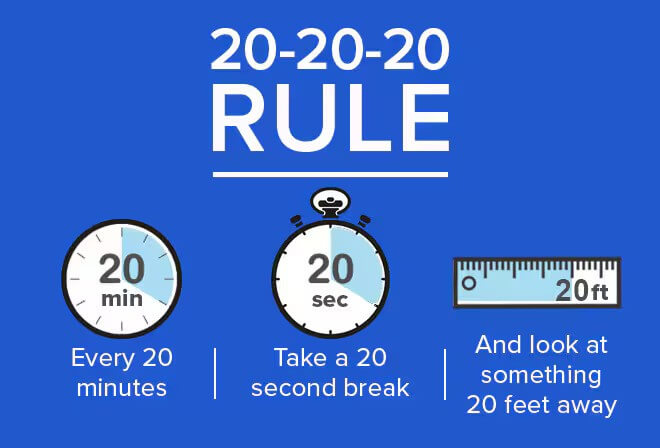In our increasingly digital world, learning how to prevent digital eye strain has become crucial for maintaining healthy vision and overall comfort. Extended screen time from computers, smartphones, and tablets can lead to uncomfortable symptoms that affect both productivity and well-being.

Understanding Digital Eye Strain
Digital eye strain, also known as computer vision syndrome, affects millions of people who spend significant time looking at digital screens. This condition occurs when our eyes work harder than usual to process the visual information from electronic displays.
Common symptoms include eye fatigue, dryness, blurred vision, headaches, and neck or shoulder pain. These issues arise because digital screens require our eyes to constantly refocus and readjust, creating strain over extended periods.
6 Proven Methods to Prevent Digital Eye Strain
1. Practice Conscious Blinking
One of the most effective ways to prevent digital eye strain is to maintain proper eye moisture through regular blinking. When concentrating on screens, people typically blink 60% less frequently than normal, leading to dry, uncomfortable eyes.
Make a conscious effort to blink completely and regularly while using digital devices. Consider setting reminders if you tend to forget. For additional relief, preservative-free artificial tears can help maintain proper eye lubrication throughout the day.
2. Optimize Your Display Settings
Proper screen configuration plays a vital role in how to prevent digital eye strain effectively. Adjust your screen brightness to match your surrounding environment—it shouldn’t be the brightest or darkest object in your field of vision.
Increase text size to reduce squinting and eye strain. Most devices offer built-in blue light filters or “night mode” settings that can reduce harsh blue light exposure, especially during evening hours.
3. Maintain Proper Screen Distance and Position
Ergonomic screen placement is essential to prevent digital eye strain. Position your monitor approximately 20-26 inches from your eyes, with the top of the screen at or slightly below eye level.
This positioning encourages a natural downward gaze, which is more comfortable for extended viewing. Ensure your screen is perpendicular to windows to minimize glare and reflections.
4. Create Optimal Lighting Conditions
Environmental lighting significantly impacts your ability to prevent digital eye strain. Work in spaces with adequate ambient lighting that doesn’t create harsh contrasts with your screen.
Avoid positioning screens directly in front of or behind bright light sources. Use adjustable blinds or curtains to control natural light, and consider task lighting that illuminates your workspace without creating screen glare.
5. Implement Regular Break Schedules
Taking systematic breaks is one of the most important strategies to prevent digital eye strain. Schedule 10-15 minute breaks every hour to rest your eyes and body.
During breaks, engage in activities that don’t require close-up focus, such as walking, stretching, or looking out a window. These pauses allow your eye muscles to relax and recover from prolonged near-vision tasks.
6. Apply the 20-20-20 Rule Consistently
The 20-20-20 rule is a widely recommended technique to prevent digital eye strain. Every 20 minutes, shift your focus to an object at least 20 feet away for a minimum of 20 seconds.
This simple practice helps relax the focusing muscles in your eyes and provides relief from the constant accommodation required for screen viewing. Set regular reminders to ensure consistent application of this rule.

Additional Considerations for Eye Health
Beyond these core strategies to prevent digital eye strain, consider annual comprehensive eye exams to detect any underlying vision issues. Some people benefit from computer glasses designed specifically for screen use.
Maintaining proper hydration and ensuring adequate sleep also support overall eye health and can reduce strain symptoms.
Creating Long-Term Healthy Habits
Successfully learning how to prevent digital eye strain requires consistent application of these techniques. Start by implementing one or two strategies and gradually incorporate others as they become routine.
Remember that preventing digital eye strain is an ongoing process that requires mindful attention to your daily screen habits. Small adjustments in how you interact with digital devices can lead to significant improvements in comfort and visual health.
By prioritizing these preventive measures, you can maintain healthy vision while staying productive in our digital age. Your eyes will thank you for taking proactive steps to prevent digital eye strain before symptoms become problematic.
Disclaimer: This content is for informational and educational purposes only. It is not intended to provide medical advice or replace consultation with qualified healthcare professionals. Always seek the advice of your physician or other qualified health providers with any questions you may have regarding a medical condition.






